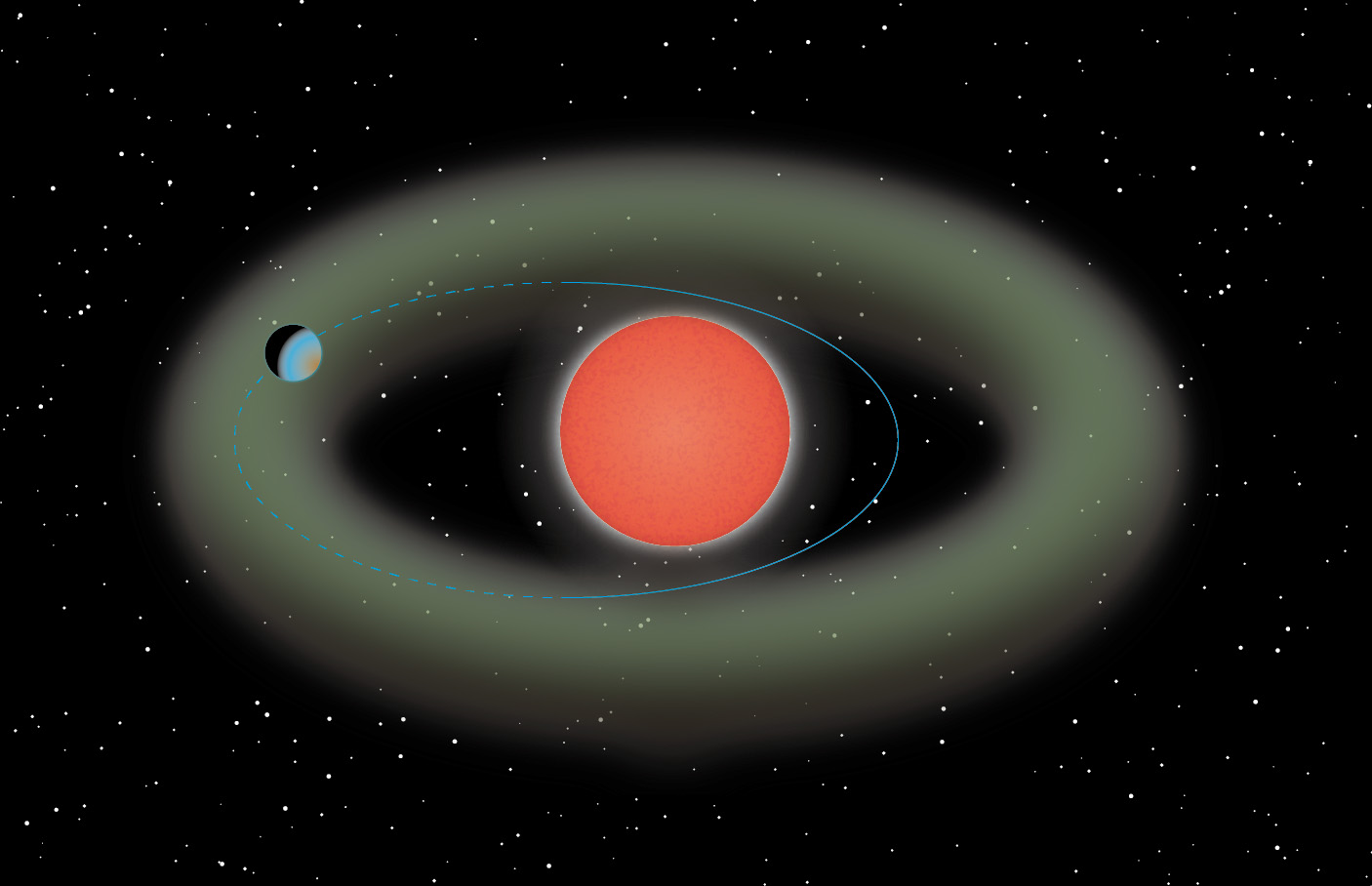A super-Earth planet has been found orbiting a red dwarf star, only 37 light-years from the Earth. Named Ross 508 b, the newly found world has an unusual elliptical orbit that causes it to shift in and out of the habitable zone. Therefore, part of the time conditions would be conducive for liquid water to exist on the planet’s surface, but other times it wouldn’t.
The relatively small size and low luminosity of red dwarf stars means the habitable zone of this exoplanet is very close to the star, Ross 508. Therefore, the ever-changing conditions and likely high radiation environment doesn’t bode well for any type of habitability on this world, especially since this planet zips around its star every 11 days. The planet is about four times the mass of the Earth.

This exoplanet is the first to be discovered by a new infrared spectrograph on the Subaru Telescope, located at the Mauna Kea Observatory on Hawaii. The Subaru Telescope is the flagship telescope of the National Astronomical Observatory of Japan.
Red dwarf stars, also called M dwarf or M-type stars, are the smallest and coolest kind of stars on the main sequence and they are also the most numerous, accounting for three-quarters of the stars in the Milky Way Galaxy. But because of their low luminosity, individual red dwarfs cannot be easily observed. They are very faint in visible light due to their low surface temperature of less than 4000 degrees.
The astronomers who discovered Ross 508b say that exoplanet discoveries around cool M dwarfs have been limited, as well. Previous planet searches using visible light spectrometers have only discovered three planets around very nearby red dwarfs, such as Proxima Centauri b. That’s why astronomers are so excited about the new InfraRed Doppler instrument on Subaru.
“Ross 508b is the first successful detection of a super-Earth using only near-infrared spectroscopy,” said Dr. Hiroki Harakawa, the lead author of the discovery paper, in a press release. “Prior to this, in the detection of low-mass planets such as super-Earths, near-infrared observations alone were not accurate enough, and verification by high-precision line-of-sight velocity measurements in visible light was necessary. This study shows that IRD-SSP alone is capable of detecting planets, and clearly demonstrates the advantage of IRD-SSP in its ability to search with a high precision even for late-type red dwarfs that are too faint to be observed with visible light.”
In total, more than 5,000 exoplanets have been confirmed so far. Exoplanet hunters say that understanding what makes planets habitable – or not — is of keen interest to those who study astrobiology, which studies how life originated on Earth and where it might exist in the Solar System and beyond.
Astronomers say the new infrared instrument offers a better chance to find more exoplanets candidates around red dwarfs, and more opportunities to investigate the possibility of life on other varied and unusual worlds.

